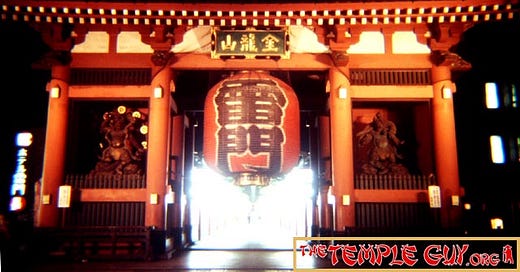For over two years, I had the privilege of living in Tokyo's Shitamachi area, a place rich in culture and history, and located less than an hour's walk from the Imperial Palace, Ueno Park, and--best of all--Senso-ji Temple in Asakusa, our destination in this episode of--
TEMPLE TALES!




